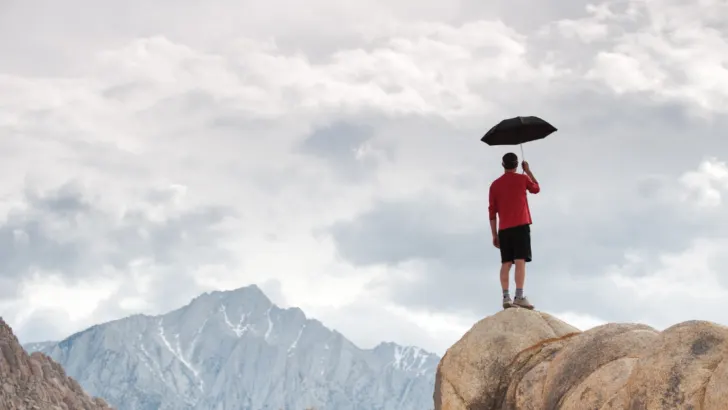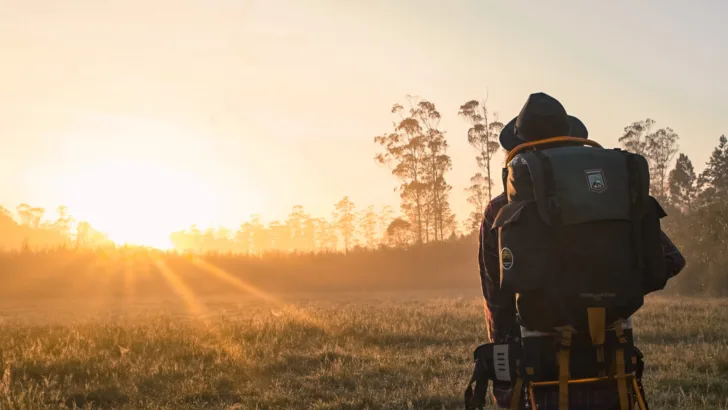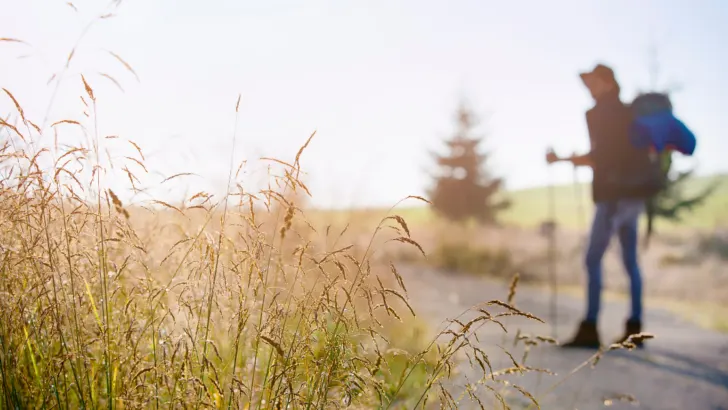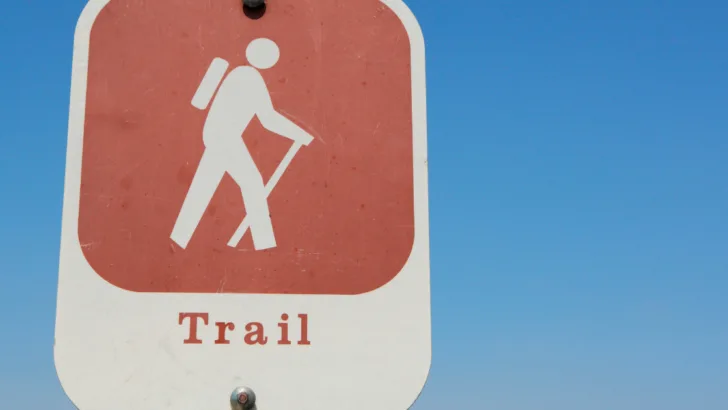As someone who loves hiking, I know firsthand how enjoyable and rewarding it can be. But have you ever wondered what would happen if you hiked every day? Would it be beneficial or harmful to your health? In this article, I will explore the potential benefits and risks of hiking every day and provide tips for doing so safely.
Hiking every day can have numerous benefits for your physical and mental health. It can improve your cardiovascular fitness, strengthen your muscles and bones, and help you maintain a healthy weight. Additionally, spending time in nature has been shown to reduce stress and anxiety and improve overall well-being. However, there are also potential risks associated with hiking every day, such as overuse injuries and fatigue. It’s important to understand these risks and take steps to mitigate them.

Key Takeaways
- Hiking every day can have numerous physical and mental health benefits, including improved cardiovascular fitness and reduced stress and anxiety.
- However, there are also potential risks associated with hiking every day, such as overuse injuries and fatigue.
- To hike every day safely, it’s important to listen to your body, gradually increase your intensity and distance, and take steps to prevent injuries.
What Happens if You Hike Everyday
As someone who loves hiking, I’ve often wondered about the benefits and drawbacks of hiking every day. Is it good for your physical and mental health, or can it be harmful? I did some research and found that there are both benefits and risks associated with hiking every day.
One of the most obvious benefits of hiking every day is the physical exercise it provides. Hiking is a great way to get your heart rate up and improve your cardiovascular health. It can also help you lose weight and build muscle. In addition, hiking can be a low-impact exercise that is easier on your joints than running or other high-impact activities.

But there are also risks associated with hiking every day. Overuse injuries, such as shin splints, can occur if you don’t give your body enough time to rest and recover between hikes. Additionally, hiking in extreme weather conditions can be dangerous, and it’s important to be prepared and take necessary precautions.
Overall, hiking every day can be a great way to improve your physical and mental health, but it’s important to listen to your body and take necessary precautions to avoid injury. In the following sections, I’ll explore the benefits and risks of hiking every day in more detail.
Benefits of Hiking Everyday
As someone who has been hiking everyday for a while, I can attest to the numerous benefits it provides. Here are some of the benefits of hiking everyday:
Physical Health Benefits
- Improved cardiovascular health: Hiking is a great cardiovascular exercise that can help improve your heart health and reduce the risk of heart disease.
- Weight loss: Hiking can help you burn calories and lose weight. According to the American Hiking Society, you can burn 100 calories per mile of hiking.
- Stronger muscles and bones: Hiking involves walking uphill and downhill, which can help strengthen your leg muscles and bones.
- Better balance and coordination: Hiking on uneven terrain can improve your balance and coordination skills.
Mental Health Benefits
- Reduced stress and anxiety: Being in nature and getting some exercise can help reduce stress and anxiety levels.
- Improved mood: Hiking can release endorphins, which can improve your mood and make you feel happier.
- Better sleep: Exercise can help you sleep better at night, and hiking is no exception.
- Increased self-esteem: Accomplishing a difficult hike can boost your self-esteem and confidence.

Overall, hiking everyday can have a positive impact on both your physical and mental health. It’s an enjoyable way to stay active and explore the outdoors.
Risks of Hiking Everyday
As much as hiking everyday can be beneficial to your physical and mental health, it also has its risks. Here are some of the risks associated with hiking everyday:
Overuse Injuries
Overuse injuries occur when you repeat the same motion over and over again. Hiking everyday can lead to overuse injuries such as shin splints, stress fractures, and tendinitis. To prevent overuse injuries, it is important to vary your hiking terrain and distance.
Dehydration
Hiking everyday can lead to dehydration, especially during hot weather. It is important to drink plenty of water before, during, and after your hike. You can also bring a water filtration system or purification tablets to ensure you have access to clean drinking water.
Sunburn
Spending long hours on the trail can expose you to harmful UV rays from the sun. It is important to wear sunscreen with a high SPF, a hat, and sunglasses to protect your skin and eyes from the sun.

Wildlife Encounters
Hiking everyday can increase your chances of encountering wildlife such as bears, snakes, and mountain lions. It is important to be aware of your surroundings and carry bear spray or other deterrents if you are hiking in areas known for wildlife.
Mental Fatigue
Hiking everyday can also lead to mental fatigue, especially if you are hiking long distances or challenging terrain. It is important to listen to your body and take breaks when necessary. You can also vary your hiking route or distance to prevent mental fatigue.
Overall, hiking everyday can be a great way to stay active and improve your physical and mental health. However, it is important to be aware of the risks associated with hiking everyday and take steps to prevent them.
Tips for Hiking Everyday Safely
As someone who hikes every day, I know the importance of staying safe while enjoying the outdoors. Here are some tips to keep in mind when hiking every day:
1. Check the Weather
Before heading out, always check the weather forecast. This will help you prepare for any changes in temperature, precipitation, or wind. It’s also a good idea to bring extra layers and rain gear, just in case.

2. Wear the Right Gear
Wearing the right gear is crucial for staying safe on a daily hike. Make sure to wear comfortable, sturdy shoes with good traction. Dress in layers, so you can adjust your clothing as needed. Wear a hat to protect your head from the sun, and sunglasses to protect your eyes.
3. Bring Plenty of Water and Snacks
Staying hydrated is essential when hiking every day. Bring plenty of water and drink it regularly, even if you don’t feel thirsty. It’s also a good idea to bring snacks to keep your energy levels up. Choose foods that are easy to pack and won’t spoil, like trail mix, energy bars, or fruit.
4. Know Your Limits
Hiking every day can be a great way to stay in shape, but it’s important to know your limits. Don’t push yourself too hard, especially if you’re new to hiking or haven’t hiked in a while. Start with shorter hikes and gradually increase your distance and elevation gain.
5. Stay on the Trail
Always stay on the trail when hiking. This will help protect the environment and prevent erosion. It will also keep you safe from hazards like steep drops or unstable ground.

6. Be Prepared for Emergencies
No matter how prepared you are, emergencies can still happen. Always bring a first aid kit and know how to use it. Carry a fully charged cell phone and a map of the area. Let someone know where you’re going and when you expect to return.
By following these tips, you can safely enjoy hiking every day.
Different Types of Hiking
As an avid hiker, I know that there are many different types of hiking. Each type offers its own unique benefits and challenges. Here are a few types of hiking that you might consider:
Day Hiking
Day hiking is the most common type of hiking. It involves hiking for a few hours or a whole day and then returning home or to a nearby campsite. Day hikes can be easy or challenging, depending on the terrain, distance, and elevation gain. They are a great way to explore local trails and enjoy the outdoors without committing to a longer trip.
Backpacking
Backpacking involves hiking with a backpack that contains all the necessary gear for camping overnight. Backpacking trips can range from one night to several weeks. They require more planning and preparation than day hikes, but they also offer the opportunity to explore remote wilderness areas and experience the beauty of nature in a more immersive way.

Thru-Hiking
Thru-hiking involves hiking a long-distance trail from start to finish in one continuous trip. Popular thru-hikes include the Appalachian Trail, Pacific Crest Trail, and Continental Divide Trail. Thru-hiking requires a significant amount of time, planning, and physical endurance, but it can be a life-changing experience for those who complete it.
Trail Running
Trail running is a type of hiking that involves running on trails instead of walking. It can be a great way to increase cardiovascular fitness and challenge yourself on technical terrain. Trail running requires proper footwear and a good level of fitness, but it can be a fun and rewarding way to experience the outdoors.
No matter what type of hiking you choose, it’s important to be prepared and stay safe. Always bring plenty of water, food, and appropriate clothing for the weather and terrain. And don’t forget to leave no trace and respect the environment around you.
How to Choose the Right Hiking Gear
As someone who hikes almost every day, I know that having the right gear is essential for a successful and enjoyable hike. Here are some tips on how to choose the right hiking gear:
1. Consider the Length and Difficulty of Your Hike
Before you start packing, consider the length and difficulty of your hike. If you’re going on a short hike on a hot day, you might only need to carry a small hydration vest. On the other hand, if you’re planning a multi-day hike in a remote area, you’ll need to bring more gear, including a tent, sleeping bag, and stove.
2. Choose the Right Backpack
Your backpack is one of the most important pieces of hiking gear you’ll own. Look for a backpack that fits your body well and has enough room to carry all of your gear. Consider the weight of the backpack itself, as a heavy backpack can make your hike more difficult.
3. Dress Appropriately
When choosing your clothing for a hike, think about the weather and the terrain. Dress in layers so you can easily adjust your clothing as needed. Look for moisture-wicking fabrics that will keep you dry and comfortable, and consider wearing hiking boots or shoes with good traction.
4. Bring Navigation Tools
Even if you’re hiking on a well-marked trail, it’s always a good idea to bring navigation tools such as a map and compass. Make sure you know how to use them before you head out on your hike.
5. Pack Plenty of Water and Food
Staying hydrated and fueled is essential for a successful hike. Pack plenty of water and bring snacks that are high in protein and carbohydrates.
6. Don’t Forget First-Aid Supplies
Accidents can happen on the trail, so it’s important to bring a first-aid kit with you. Make sure your kit includes items such as bandages, antiseptic wipes, and pain relievers.

By following these tips, you can choose the right hiking gear for your next adventure and ensure a safe and enjoyable hike.
How to Plan a Hiking Trip
Planning a hiking trip can be an exciting and rewarding experience. Here are a few things to keep in mind when planning your next adventure:
Determine Your Route
The first step in planning a hiking trip is to determine your route. Consider your skill level, the length of your trip, and the terrain you will be hiking on. Research the area you plan to hike in and take note of any potential hazards or challenges you may face.
Choose Your Gear
Once you have determined your route, it is important to choose the right gear for your trip. This includes appropriate footwear, clothing, and gear for the weather conditions you may encounter. Make sure to pack enough water and food for your trip, and consider bringing a map and compass in case you get lost.
Check the Weather
Before you set out on your hiking trip, it is important to check the weather conditions for the area you will be hiking in. This will help you pack appropriately and prepare for any potential weather-related hazards.
Consider Safety Precautions
When planning a hiking trip, it is important to consider safety precautions. This includes letting someone know where you will be hiking, bringing a first aid kit, and knowing how to handle any potential wildlife encounters.
Leave No Trace
Finally, it is important to practice Leave No Trace principles when hiking. This means leaving the trail and campsite as you found it, packing out all trash and waste, and respecting wildlife and natural resources. By following these principles, you can help preserve the beauty of the outdoors for future generations to enjoy.

Hiking Destinations Around the World
One of the best things about hiking is that it can be done almost anywhere in the world. From the mountains of Nepal to the deserts of Arizona, there are countless destinations for hikers to explore. Here are a few of my favorite hiking destinations around the world:
Torres del Paine National Park, Chile
Located in the southern Patagonia region of Chile, Torres del Paine National Park is known for its stunning mountain scenery and diverse wildlife. The park offers a variety of hiking trails, ranging from short day hikes to multi-day treks. The most famous hike in the park is the W trek, which takes hikers on a 4-5 day journey through some of the park’s most beautiful landscapes.
Mount Kilimanjaro, Tanzania
Mount Kilimanjaro is the highest mountain in Africa and one of the most popular hiking destinations in the world. Hikers from all over the world come to Tanzania to climb Kilimanjaro, which can take anywhere from 5-10 days depending on the route chosen. The climb is challenging, but the views from the summit are absolutely breathtaking.
Yosemite National Park, California, USA
Yosemite National Park is one of the most iconic national parks in the United States, known for its towering granite cliffs, stunning waterfalls, and ancient sequoia trees. The park offers a variety of hiking trails, ranging from easy walks to challenging multi-day treks. Some of the most popular hikes in the park include the Half Dome hike, the Mist Trail, and the John Muir Trail.

Related Posts:
Interviews with People Who Hike Every Day, as well as Experts on Hiking Safety and Fitness
I spoke with several individuals who hike every day to learn about their experiences. Here are some of their insights:
- John: John is a 45-year-old avid hiker who has been hiking every day for the past two years. He says that hiking has helped him lose weight, improve his mental health, and connect with nature. John recommends starting slow and gradually increasing the distance and difficulty of your hikes.
- Sarah: Sarah is a 30-year-old hiker who has been hiking every day for the past six months. She says that hiking has helped her reduce stress and anxiety, and she enjoys exploring new trails and scenery. Sarah advises hikers to wear comfortable shoes and bring plenty of water and snacks.
- Dr. Smith: Dr. Smith is a physician who specializes in sports medicine. He says that hiking every day can be a great way to improve cardiovascular health, strengthen muscles, and reduce the risk of chronic diseases such as diabetes and heart disease. However, he cautions hikers to be aware of their physical limitations and to seek medical attention if they experience any pain or discomfort.
- Samantha: Samantha is a certified personal trainer who works with hikers of all levels. She recommends incorporating strength training exercises such as lunges, squats, and planks into your hiking routine to improve balance and stability. Samantha also advises hikers to stretch before and after their hikes to prevent injuries.
In summary, hiking every day can have a variety of physical and mental health benefits. However, it is important to listen to your body and seek medical attention if you experience any pain or discomfort. Working with a certified personal trainer or physician can also help you develop a safe and effective hiking routine.
Conclusion
After researching and analyzing the benefits and potential risks of hiking every day, I have come to the conclusion that it can be a healthy and enjoyable activity as long as it is approached with moderation and caution.
Hiking every day can bring numerous physical and mental health benefits, such as improved cardiovascular health, reduced stress levels, and increased happiness and well-being. It can also be a great way to explore nature, challenge yourself, and connect with others.
However, it is important to listen to your body and avoid overexertion or injury. It is also crucial to prepare properly by wearing appropriate footwear and clothing, bringing enough water and snacks, and planning your route ahead of time.
Furthermore, it is important to be aware of the potential risks associated with hiking, such as getting lost, encountering dangerous wildlife, or suffering from heat stroke or hypothermia. By taking the necessary precautions and being mindful of your surroundings, you can minimize these risks and enjoy the benefits of hiking every day.
In summary, hiking every day can be a rewarding and healthy activity, but it is important to approach it with moderation, caution, and preparation. By doing so, you can reap the benefits of this wonderful outdoor activity and improve your physical and mental well-being.
Frequently Asked Questions
How often should you hike for maximum benefits?
Hiking is a great way to stay active and healthy, but how often should you do it? According to experts, hiking for at least 30 minutes to an hour, three to four times a week can provide maximum benefits. However, the frequency of hiking can vary depending on your fitness level, goals, and schedule.
What are the physical effects of hiking regularly?
Hiking regularly can have numerous physical benefits, including improved cardiovascular health, increased muscle strength and endurance, and improved balance and coordination. Additionally, hiking can help reduce the risk of chronic diseases, such as heart disease, diabetes, and obesity.
Is there such a thing as hiking too much?
While hiking is generally a safe and healthy activity, there is such a thing as hiking too much. Overdoing it can lead to overuse injuries, such as shin splints and stress fractures, as well as muscle soreness and fatigue. It’s important to listen to your body and gradually increase the intensity and duration of your hikes.
Can hiking lead to a noticeable body transformation?
Hiking can be a great way to improve your overall fitness and body composition. However, it’s important to remember that any noticeable body transformation requires a combination of regular exercise, a healthy diet, and adequate rest and recovery. Hiking alone may not be enough to achieve significant changes in body composition.
Are there any negative effects of hiking on knee health?
Hiking is generally considered a low-impact activity that is easy on the joints. However, if you have a history of knee problems or are carrying excess weight, hiking may put additional stress on your knees. It’s important to wear proper footwear, use trekking poles, and gradually increase the intensity and duration of your hikes to minimize the risk of knee injuries.
Does hiking every day lead to weight loss or improved fitness?
Hiking every day can be a great way to improve your fitness and promote weight loss. However, the amount of weight loss and fitness improvement will depend on a variety of factors, including the duration and intensity of your hikes, your diet, and your overall lifestyle. It’s important to approach hiking as part of a holistic approach to health and wellness.
Related Posts:
